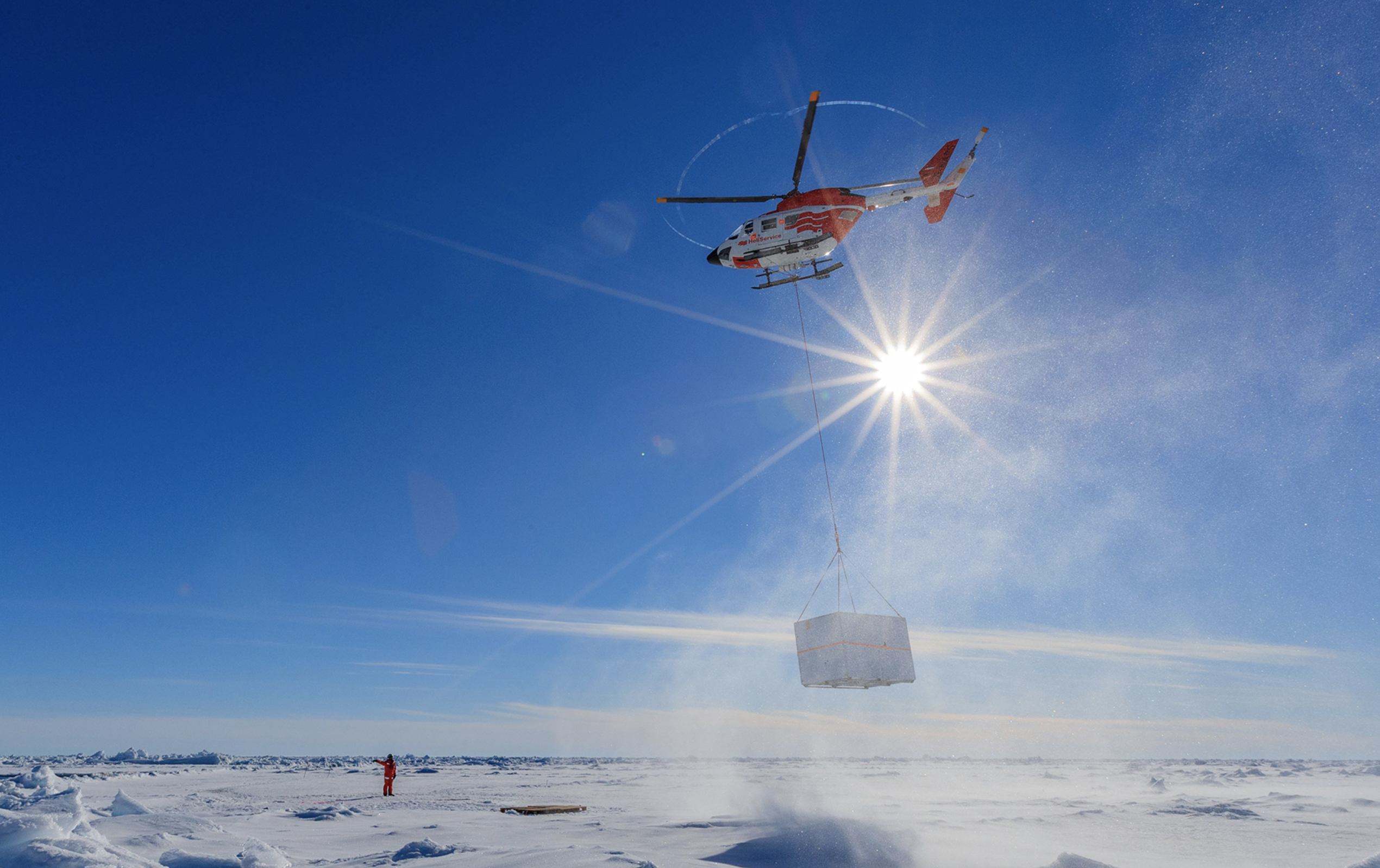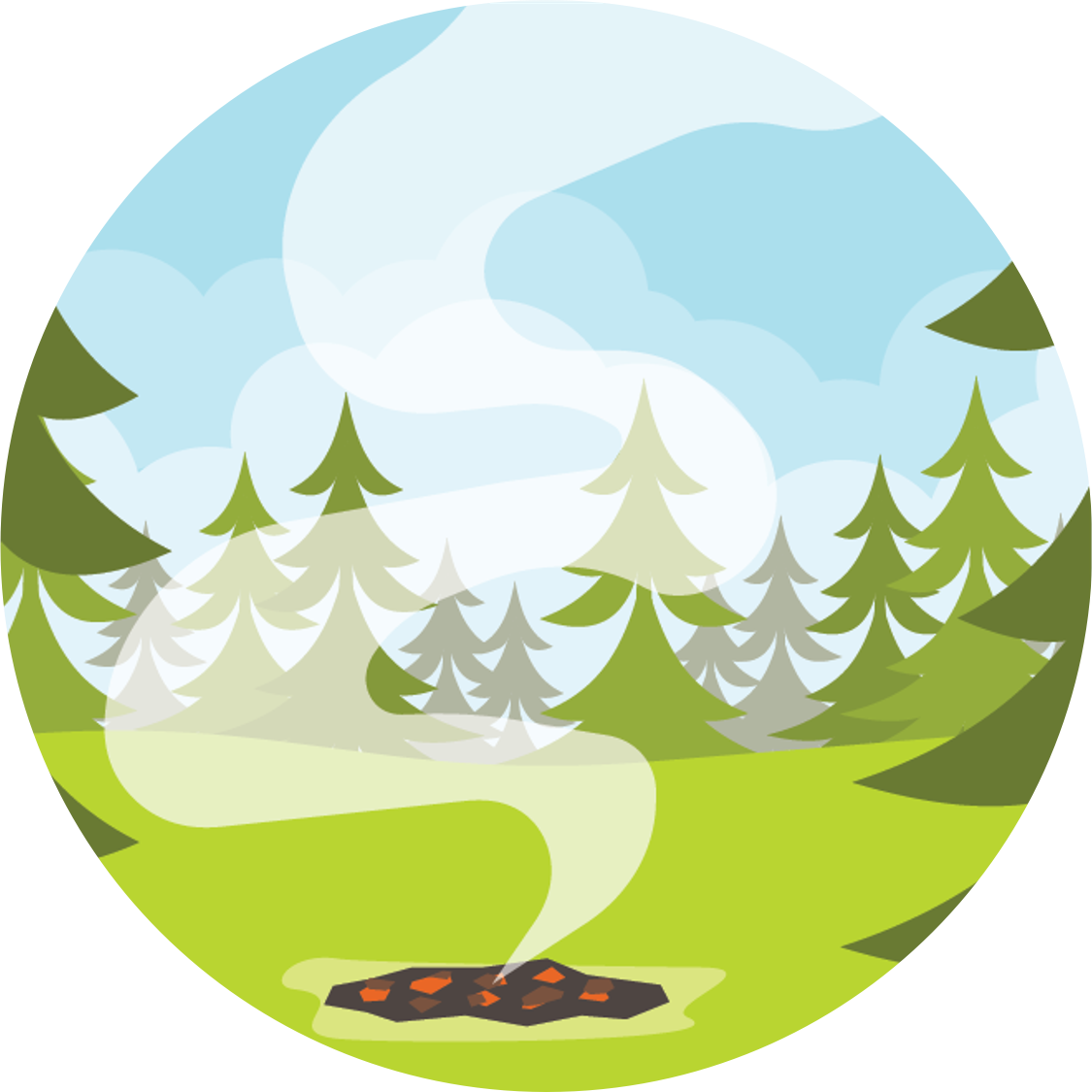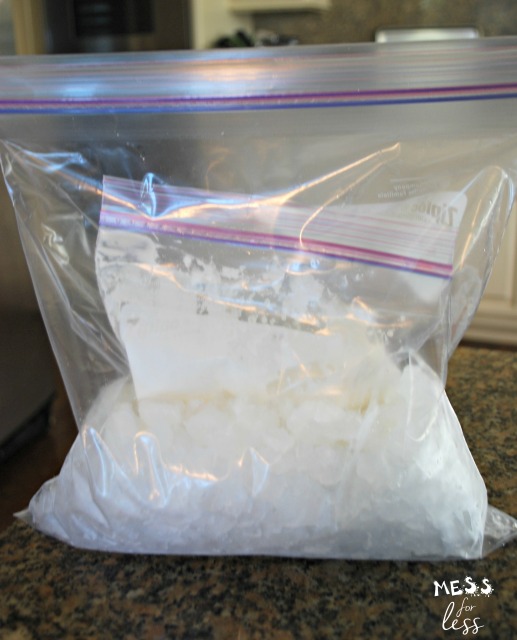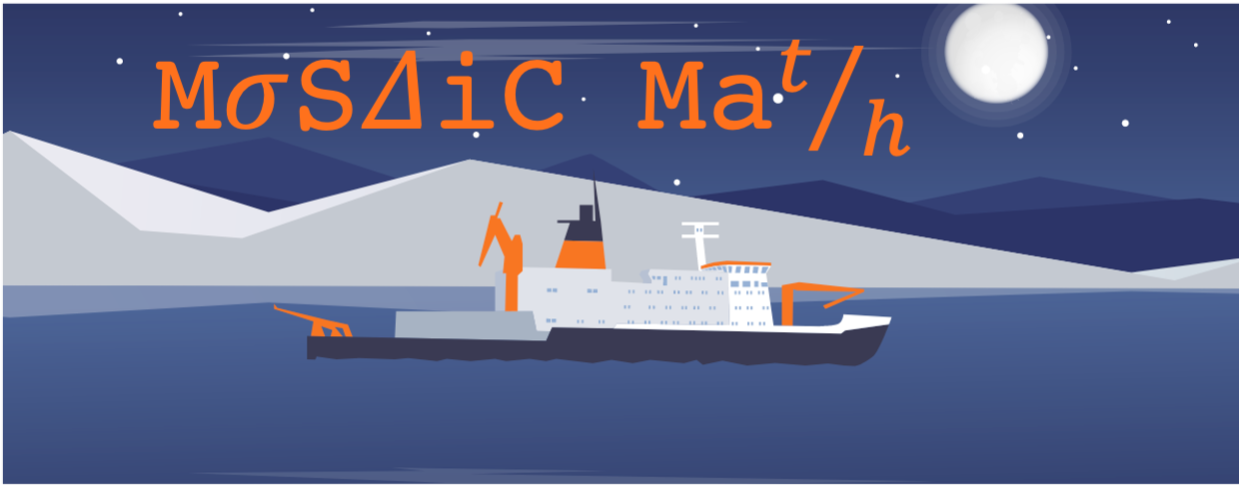On the Ice Again

With the basic infrastructure for the research camps in place on the ice, the science teams can start reinstalling their instruments and research equipment. For some teams, the heavy equipment must be moved onto the ice via helicopter or skidoo. The ice continues to change with increasing summer temperatures and weeks now of continuous sunlight: aqua-blue melt ponds are appearing all over the ice, making waterproof boots a necessity for anyone venturing out.
The National Snow & Ice Data Center (NSIDC) reported that the seasonal Arctic sea ice decline in May didn't happen any faster than usual, but that sea ice extent has remained well below the 1981-2010 average. Parts of the Arctic, like Northwestern Russia and the central Arctic Ocean have actually experienced recent record-breaking heat. Siberia reported temperatures as high as 100 degrees F in mid June, and these extremely high temperatures have fanned wildfires in the boreal forests and tundra regions of northern Russia. Wildfires can cause the release of a lot of stored carbon into the atmosphere. Expeditions like MOSAiC are crucial for developing a more complete picture and understanding of the Arctic climate system so that we can better predict and prepare for the impacts of events like this in the future.
Photo credit: Lianna Nixon
Read More: Siberian heat wave is a 'warning cry' from the Arctic, climate scientists say
What are the impacts of a warming Arctic on indigenous peoples?
*New* MOSAiC Expedition Video
Enjoy this new video about the MOSAiC expedition produced by educator and MOSAiC participant Friederike Krüger:
Browse all MOSAiC expedition-related videos
 #askmosaic: Ice cream on an icebreaker
#askmosaic: Ice cream on an icebreaker
This question was submitted by Everett & Emmett from Double Eagle Elementary School in Albuquerque: Can you make ice cream outside?
"One team member used to shake a tub containing powdered milk, sugar, salt and strawberry jelly as part of his exercise routine out on the deck of the Kapitan Dranitsyn during the transit in February when it was in the -30s C (very cold!). He made ice cream this way and it was quite good!"
-Chris Cox, NOAA; Chris just returned from leg 3 of the expedition
Send us your #askmosaic questions!
 MOSAiC Virtual Summer Camp
MOSAiC Virtual Summer Camp
Did you or your kids have summer camp plans that fell through because of COVID? Not to worry! Tune in to MOSAiC Monday each week for a fun, hands-on and engaging virtual summer camp activity related to MOSAiC or the Arctic. All MVSC activities should be done with parent supervision!

This Week's Activity: Make your own ice cream in a bag!
Did you know that the process of making ice cream involves knowing a bit of chemistry?
What you will need:
- Small (sandwich size) Ziploc bag
- Large (gallon size) Ziploc bag
- Measuring cup
- 3-4 handfuls of ice cubes
- 1 cup of half & half (or a dairy-free milk of your choice)
- 2 tbsp sugar
- 1/2 tsp vanilla
- 1/2 cup salt (ideally coarse rock salt)
- Gloves or a hand towel
- Bowl and spoon
What to do:
1. Pour the half & half (or dairy-free milk), vanilla, and sugar into the small Ziploc bag. Try to get as much air out of the bag as you can, and seal it up.
2. Pour the salt and ice into the large Ziploc bag.
3. Put the small bag with the cream mixture into the large bag with the salt and ice. Seal up the large bag and SHAKE SHAKE SHAKE for 5-10 minutes. You'll notice the large bag will get significantly colder as you shake it - you can put gloves on or use a towel to hold the bag if needed.
4. When the cream mixture in the small bag has thickened, take it out of the large bag, rinse it off, and pour your ice cream into a bowl.
5. Dig in!
How and why did that work?!
How the heck were you able to make the ice cream mixture freeze by surrounding it with ice and salt and shaking it without putting it in a freezer? Why did we add salt to the ice? The Arctic can actually give us some insight into this process. You might remember from past MOSAiC Mondays that when seawater in the Arctic freezes, it typically expels the salt in the water so that the sea ice is such fresher than the seawater. Salt actually lowers the freezing point of water, and when you add it to ice like you did in this activity, it can cause ice to melt. But melting is what we call an 'endothermic reaction,' which just means that for melting to happen, the bonds between water molecules must be broken, which requires energy. Have you ever tried to break a piece of string in half by pulling it from either end? You have to use some energy to make it break in half, right? When ice melts, the energy that makes that melting possible comes from its surroundings in the form of heat. In this activity, where do you think the energy that melted the ice came from? How do you know? What evidence do you have? When sea ice in the Arctic melts in the summertime, where does the energy that melts the ice come from? Why does sea ice melt in the summer in the Arctic but grow (freeze) in the winter?
This activity was adapted from one written by Casey O'Hara and others at PolarTREC. Check out that activity here.
Picture credit: Mess for Less
Check out our full list of virtual and at-home polar learning resources here!
 Educators' Corner
Educators' Corner
The school year has ended for most K-12 students and teachers in many places, which means that it's time for professional development workshops, fall curriculum planning, and hopefully a bit of relaxation time! Each week throughout the summer, we'll use Educators' Corner to highlight MOSAiC and Arctic-related lessons, multimedia resources, and other educational materials that you can use in your NGSS (or similar) classroom, in person or remotely. Are you looking for a particular kind of educational resource? Let us know! Email us at mosaic@colorado.edu.
For Your Classroom: MOSAiC Math
Bust through those "When am I ever going to use this in real life?" grievances in your math classroom with application problems from the MOSAiC expedition! The success of the MOSAiC expedition relies on MOSAiC scientists and crew constantly engaging in math and computational thinking, from how much food they will need on the ship, to how thick the ice must be for a plane to land on it. Check out our MOSAiC math problems, or create your own!
MOSAiC Math
Educators: Sign up now for MOSAiC Expedition Virtual Teacher Workshops in July and August!
Workshop 1: New & Old Arctic
When: July 28-29 10 am - 2 pm MT
Where: Your living room
Cost: Free!
What you get: Certificate for 10 hours of professional development with the option to pay for 1 graduate credit from CU Boulder
Workshop 2: Arctic Feedbacks: Not All Warming is Equal
When: August 4-5 10 am - 2 pm MT
Where: Your living room
Cost: Free!
What you get: Certificate for 10 hours of professional development and 1 graduate credit from CU Boulder (paid for by CIRES)
 MOSAiC Weekly Tracking
MOSAiC Weekly Tracking
Plot the Polarstern
Each week we will provide you with the latitude and longitude coordinates of the Polarstern so that you can track its journey across the Arctic.
Download the map to plot coordinates
Download a larger map of the Arctic for a bigger picture view of the expedition area
Location of the Polarstern
| Date | Latitude | Longitude |
| September 16, 2019 | 69.68 N | 18.99 E |
| September 23, 2019 | 72.31 N | 26.93 E |
| September 30, 2019 | 85.12 N | 138.05 E |
| October 4, 2019** | 85.08 N | 134.43 E |
| October 7, 2019 | 85.10 N | 133.82 E |
| October 14, 2019 | 84.85 N | 135.03 E |
| October 21, 2019 | 84.97 N | 132.73 E |
| October 28, 2019 | 85.47 N | 127.07 E |
| November 4, 2019 | 85.88 N | 121.70 E |
| November 11, 2019 | 85.82 N | 116.00 E |
| November 18, 2019 | 86.05 N | 122.43 E |
| November 25, 2019 | 85.85 N | 121.35 E |
| December 2, 2019 | 85.97 N | 112.95 E |
| December 9, 2019 | 86.25 N | 121.40 E |
| December 16, 2019 | 86.62 N | 118.12 E |
| December 23, 2019 | 86.63 N | 113.20 E |
| December 30, 2019 | 86.58 N | 117.13 E |
| January 6, 2020 | 87.10 N | 115.10 E |
| January 13, 2020 | 87.35 N | 106.63 E |
| January 20, 2020 | 87.42 N | 97.77 E |
| January 27, 2020 | 87.43 N | 95.82 E |
| February 3, 2020 | 87.42 N | 93.65 E |
| February 10, 2020 | 87.78 N | 91.52 E |
| February 17, 2020 | 88.07 N | 78.52 E |
| February 24, 2020 | 88.58 N | 52.87 E |
| March 2, 2020 | 88.17 N | 31.02 E |
| March 9, 2020 | 87.93 N | 24.20 E |
| March 16, 2020 | 86.87 N | 12.70 E |
| March 23, 2020 | 86.20 N | 15.78 E |
| March 30, 2020 | 85.37 N | 13.27 E |
| April 6, 2020 | 84.52 N | 14.38 E |
| April 13, 2020 | 84.28 N | 14.97 E |
| April 20, 2020 | 84.52 N | 14.57 E |
| April 27, 2020 | 83.93 N | 15.65 E |
| May 4, 2020 | 83.92 N | 18.03 E |
| May 11, 2020 | 83.47 N | 13.08 E |
| May 18+, 2020 | 83.32 N | 8.68 E |
| May 25+, 2020 | 82.43 N | 8.28 E |
| June 1+, 2020 | 81.33 N | 9.93 E |
| June 8+, 2020 | 78.10 N | 12.73 E |
| June 15+, 2020 | 82.20 N | 8.18 E |
| June 22, 2020 | 81.95 N | 9.27 E |
| June 29, 2020 | 82.03 N | 9.88 E |
**Day when MOSAiC reached the ice floe that the Polarstern will become frozen in and drift with for the next year.
+ Indicates when the Polarstern traveled under its own engine power (no drifting)
Log MOSAiC Data
Keep track of Arctic conditions over the course of the expedition:
Download Data Logbook for Sept. 2019 - Dec. 2019
Download Data Logbook for Dec. 2019 - Mar. 2020
Download Data Logbook for Mar. 2020 - June 2020
| Date | Length of day (hrs) | Air temperature (deg C) at location of Polarstern | Arctic Sea Ice Extent (million km2) |
| September 16, 2019 | 13.25 | High: 10 Low: 4.4 | 3.9 |
| September 23, 2019 | 12.35 | High: 6 Low: -1 | 4.1 |
| September 30, 2019 | 9.1 | -4.7 | 4.4 |
| October 4, 2019** | 6.27 | -13.0 | 4.5 |
| October 7, 2019 | 3.05 | -8.2 | 4.6 |
| October 14, 2019 | 0 | -14.7 | 4.8 |
| October 21, 2019 | 0 | -12.8 | 5.4 |
| October 28, 2019 | 0 | -18.3 | 6.8 |
| November 4, 2019 | 0 | -18.9 | 8.0 |
| November 11, 2019 | 0 | -25.5 | 8.7 |
| November 18, 2019 | 0 | -10.7 | 9.3 |
| November 25, 2019 | 0 | -18.4 | 10.0 |
| December 2, 2019 | 0 | -26.6 | 10.4 |
| December 9, 2019 | 0 | -23.1 | 11.2 |
| December 16, 2019 | 0 | -19.2 | 11.8 |
| December 23, 2019 | 0 | -26.9 | 12.2 |
| December 30, 2019 | 0 | -26.4 | 12.6 |
| January 6, 2020 | 0 | -28.0 | 13.0 |
| January 13, 2020 | 0 | -30.7 | 13.1 |
| January 20, 2020 | 0 | -27.1 | 13.6 |
| January 27, 2020 | 0 | -22.5 | 13.8 |
| February 3, 2020 | 0 | -28.8 | 14.1 |
| February 10, 2020 | 0 | -26.2 | 14.5 |
| February 17, 2020 | 0 | -31.9 | 14.4 |
| February 24, 2020 | 0 | -24.0 | 14.6 |
| March 2, 2020 | 0 | -35.5 | 14.8 |
| March 9, 2020 | 0 | -37.9 | 14.7 |
| March 16, 2020 | 10.5 | -27.5 | 14.7 |
| March 23, 2020 | 16.5 | -28.7 | 14.4 |
| March 30, 2020 | 24 | -28.6 | 14.0 |
| April 6, 2020 | 24 | -18.2 | 13.7 |
| April 13, 2020 | 24 | -25.8 | 13.6 |
| April 20, 2020 | 24 | -10.2 | 13.3 |
| April 27, 2020 | 24 | -11.7 | 12.8 |
| May 4, 2020 | 24 | -16.2 | 12.8 |
| May 11, 2020 | 24 | -10.4 | 12.4 |
| May 18, 2020 | 24 | -5.1 | 11.7 |
| May 25, 2020 | 24 | 0.4 | 11.5 |
| June 1, 2020 | 24 | 0.0 | 11.1 |
| June 8+, 2020 | 24 | -0.1 | 10.6 |
| June 15+, 2020 | 24 | -0.4 | 10.1 |
| June 22, 2020 | 24 | -0.4 | 9.6 |
| June 29, 2020 | 24 | 0.5 | 9.2 |
*Note: We expect data to fall within the following ranges: Length of day, 0-24 hours; Temperature, -40 to 14 degrees C; Sea ice extent, 3-15 million km2
**Day when MOSAiC reached the ice floe that the Polarstern will become frozen in and drift with for the next year.
Is there something you'd like to see in MOSAiC Monday? Let us know!
Send us your feedback
New to MOSAiC Monday? Check out past editions!
Browse more expedition-related educational resources, videos, and blogs
Email us! mosaic@colorado.edu

